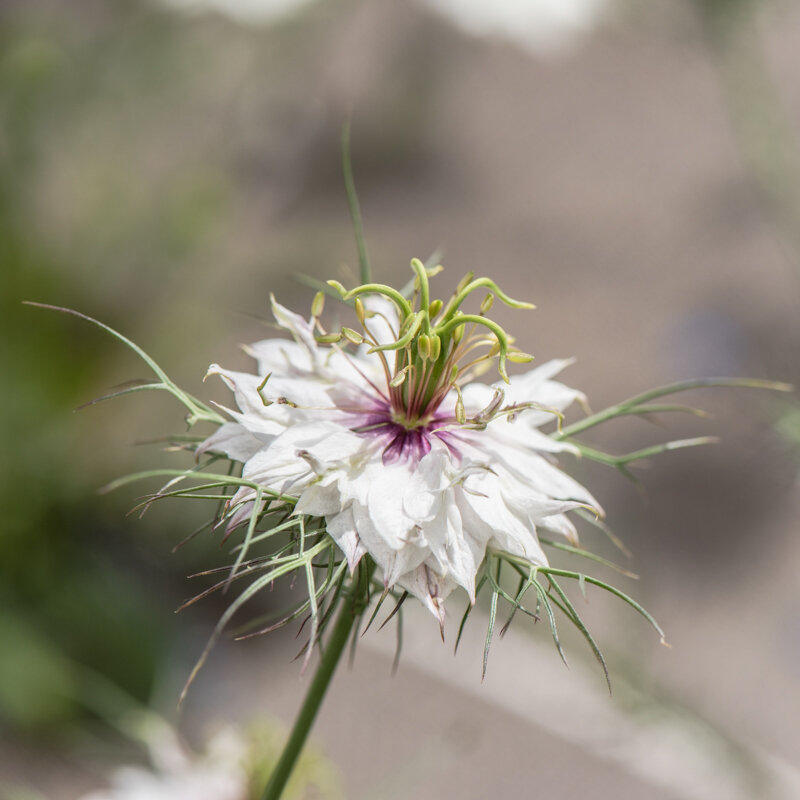Nigella sativa
On small plants, this species produces white flowers followed by large capsules containing the precious black seeds.
Nigella sativa, also known as black cumin or cultivated black cumin, is one of the few Master Medicinal Plants capable of eradicating a very broad spectrum of multi-resistant bacteria.
These products may also be of interest to you
in the ground, on the fly, online
Sow lightly, directly in place, in well-warmed soil. Press lightly and water in light showers. When plants have 3 to 4 leaves, thin out if necessary, leaving only one plant at 30 cm in all directions. To extend the flowering period, stagger sowing.
In mild climates, autumn sowing is possible for earlier flowering.
March, April, May, June
June, July, August, September
in the ground
semi-shade, sunny
medium
all floor types
drained, reheated, rich
Nigella sativa
early
200 seeds
White
edible
From 20 to 30 cm
Eurasia
Nigella sativa has been used by Greek, Unani, Ayurvedic, Arabic and Chinese medical systems for thousands of years to treat cancers and tumors. Its effectiveness has recently been proven, using modern methods, against cancers of the breast, prostate, skin, lungs, kidneys, liver, cervix, colon, etc., and leukemia. It has powerful pro-apoptotic, anti-proliferative, antioxidant, anti-metastatic, anti-mutagenic and cyto-toxic activity. Nigella sativa has been used as an antihypertensive, liver and heart tonic, diuretic, digestive, menstrual and urinary stimulant; to treat epilepsy, headaches, toothache, asthma, leprosy, cataracts, bronchitis, rheumatism, diarrhea, inflammation, acne, burns, rashes, paralysis, amenorrhea, dysmenorrhea, conjunctivitis, lack of appetite, diabetes, vomiting. It is highly effective against intestinal worms: Schistosoma mansoni, Hymenolepis nana, Trichinella spiralis, Aspiculuris tetraptera... Nigella sativa is traditionally considered a universal panacea. Although it is also highly conducive to fertility and the production of breast milk, its use is not recommended for pregnant women due to its antioxidant activity - i.e., its ability to block uterine contractions and delay childbirth.










